1
Preface
When Ruby was six years old in 1960, something important was happening in America. It was about making sure all people, no matter their skin color, could go to the same schools and have the same chances. This was a big change, especially in places like where she lived, Louisiana (in the South).
Back then, not all children could go to any school they wanted. The laws said that black children and white children had to go to different schools. But some people, like Linda Brown and her family, said this was wrong. They fought for change, and the government leaders in America listened.
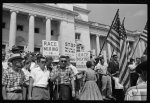 |
In 1954, the year Ruby Bridges was born, the Supreme Court said that schools had to open their doors to everyone. This was good news, but not all places wanted to follow this new rule. In some places like Little Rock, Arkansas, soldiers had to come and make sure that black students could go to school safely.
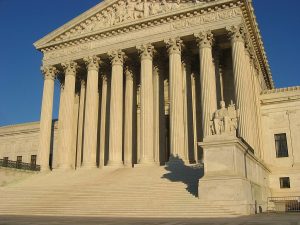 |
A Brief Look at American History
1. Slavery (1600s-1865):
A long time ago, Europeans took Africans from Africa in ships and transported them to North America, the Caribbean, Central America, and South America. The white people treated the black people very unfairly and made them work very hard without getting paid. This is called slavery. The white people separated wives from their husbands. They separated parents from their children. They beat the black people when they did not work. They did not allow them to practice their religion. It was a sad time when not everyone was treated equally. In 1865, there was a big fight between people who wanted slavery and people who did not want slavery. This fight is called the Civil War, and the North won. That’s when slavery finally ended.
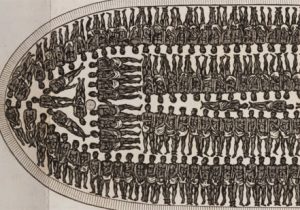 |
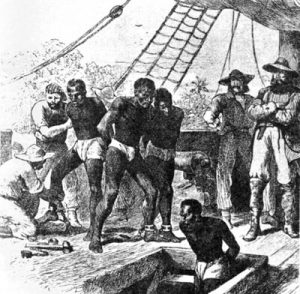 |
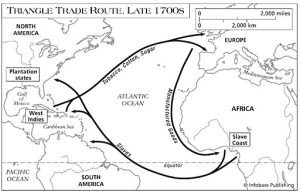 |
2. The Civil War (1861-1865):
The Civil War lasted from 1861 to 1865. It was a war between the Northern states and the Southern states in the United States. The North did not want slavery to continue. The South was making a lot of money from the free work of slaves, and they wanted slavery to continue. In the end, the side that wanted to stop slavery won, and that was a great victory!
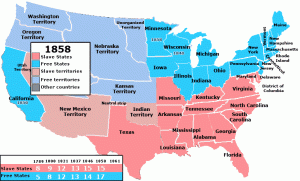 |
3. Jim Crow Laws (1870s-1960s):
After the Civil War, new laws called Jim Crow laws were made. White people made these laws to keep black and white people separate. These laws were not fair. Black people couldn’t go to the same schools, drink from the same water fountains, or use the same places as white people. In addition, the black schools were not as good as the white schools. They did not have a lot of books or desks. They had many students in one classroom. White schools were bigger, newer, nicer, and had more books and more teachers. The drinking fountains were also not as good. White drinking fountains had cold refrigerated water and black or ‘colored’ drinking fountains had warm water. Black people had to sit at the back of the bus or they had to stand up. All of these things were very unfair and this made life hard for many people.
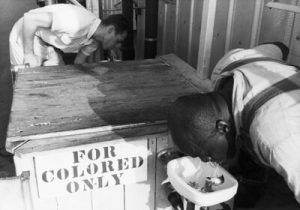 |
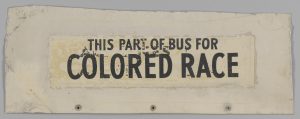 |
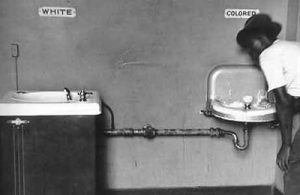 Attribution-NonCommercial-ShareAlike 2.0 Generic |
4. The Civil Rights Movement (1950s-1960s):
Around 100 years later, in the 1950s and 1960s, people were ready to protest and fight for things to be fair and equal for everyone. This time was called the Civil Rights Movement. People like Martin Luther King Jr. and Rosa Parks spoke up and protested for equal rights. In 1960, a federal judge said, “No more separate schools.” Black and white children could now go to school together. This is when Ruby Bridges’ story began.
Ruby Bridges was a brave little girl who went to an all-white school, making history. Even though it was hard, she showed everyone that we can all be friends and learn together, no matter what we look like.
So, get ready to read about Ruby’s exciting journey during this important time in history. Let’s explore the 1960s and learn how people worked together to make things better for everyone!
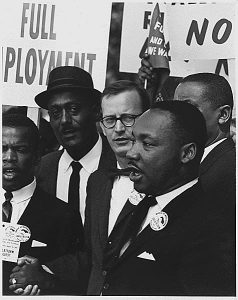 |
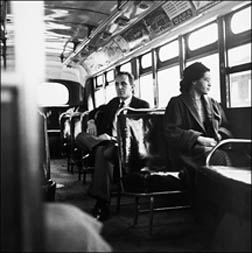 |
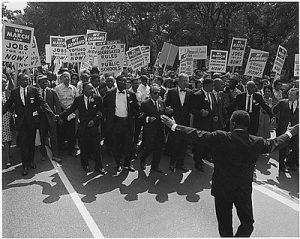 |
the federal and state rules
leyes
القوانين
законы
lois
pháp luật
법률
ច្បាប់
not correct
military workers
when people made other people work for free
esclavitud
عبودية
рабство
esclavage
chế độ nô lệ
노예 제도
ទាសភាព
not fair / not just
injustamente
بشكل غير عادل
несправедливо
injustement
không công bằng
부당하게
អយុត្តិធម៌
to hit someone
golpear a alguien
لضرب شخص ما
ударить кого-то
frapper quelqu'un
đánh ai đó
누군가를 때리려고
ដើម្បីវាយនរណាម្នាក់
to let someone do something
permitir
لكى يسمح
позволять
autoriser
cho phép
허용하기 위해
ដើម្បីអនុញ្ញាត
tables for school/offices
strong
valiente
شجاع
храбрый
courageuse
can đảm
용감한
ក្លាហាន

